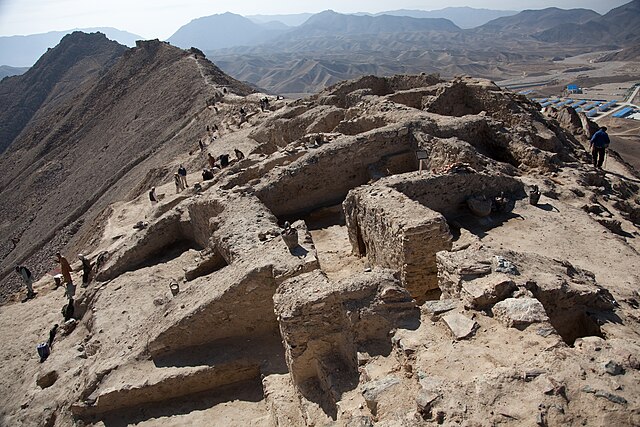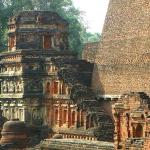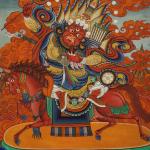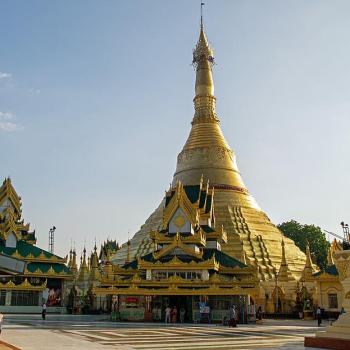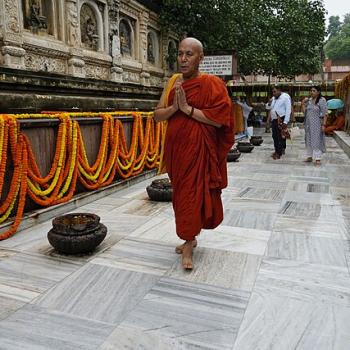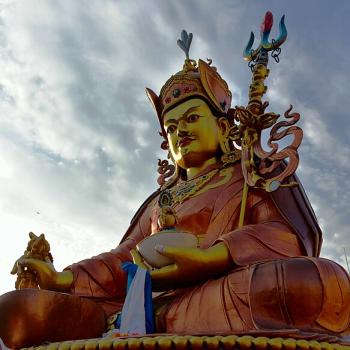Mes Aynak is a desolate place located about 25 miles, or 40 kilometers, southeast of Kabul, Afghanistan. In photographs much of the area around Mes Aynak appears to be nothing but sand. But beneath the sand are treasures — one mineral, one archeological. And one treasure may be destroyed to aquire the other.
Beneath the sands of Mes Aynak is a fortune of copper, one of the largest deposits of copper in the world. Copper is essential to renewable energy technology. Electric vehicles require 2.5 times more copper to build than gas vehicles. Solar farms and wind installations require as much as five times more copper than gas or coal plants, because copper is an efficient electricity conductor. There is keen global interest in mining Afghanistan’s copper. At the same time, Afghanistan is struggling economically. Most Afghans are “poor, hungry and in need of humanitarian assistance” according to the United States Institute of Peace. Cash-strapped Afghanistan is keenly interested in profiting from the copper.
Beneath the sands of Mes Aynak are the ruins of earlier civilizations. Some have called it one of the most important archeological sites in the region. It was once a major center for Buddhism, and the ruins of monasteries, covering many acres, have been unearthed from the sands along with hundreds of statues and other artifacts. Beneath these Buddhist ruins archeologists also have found remnants of Bronze Age civilization going back 5,000 years. The archeologists are racing to preserve and document as much as they can before it’s destroyed by copper mining.
The Mes Aynak Site
In 1963, a French geologist arrived in the village of Mes Aynak. He was there to survey the copper-bearing strata in the mountains there. But as he bored for copper samples, he found something else — the remains of a long-buried city. Archeologists of Kabul did a preliminary survey of the site. But before they could pull together the enormous resources needed to properly excavate an area of many acres, there was war.
There was a coup in Afghanistan 1978 and another in 1979 and then a Soviet invasion. While the Soviets occupied Afghanistan they built tunnels through the old ruins looking for copper. After the Soviet occcupation ended in 1989, the tunnels became a hiding place for the militant group al-Qaeda. Later al Qaeda used the area all around the ruins as a training camp. During the U.S. military action against al Qaeda in 2002, U.S. Special Forces attacked one of the tunnels. Burn marks from the fighting are still visible.
When French archeologists came to the site in 2004, they realized it had been heavily plundered. It was clear that large teams of professional art looters had dug through the mounds and removed whatever statues were intact enough to move. The remains of stucco figures too damaged to sell were scattered everywhere. Guards were hired to stop the looting. But the first set of guards posted around the site ended up shooting each other, according to a report in the Guardian. Even with these setbacks, by 2004 it was obvious Mes Aynak was a site of major importance. It’s believed the Mes Aynak Buddhist community was at its peak from the 5th to 7th centuriess and abandoned by the 10th century.
Buddhism in Afghanistan
Although there are claims of Buddhism reaching what is now Afghanistan and Pakistan much earlier, the tangible evidence we have says Buddhism was introduced to that part of central Asia during the reign of the Mauryan Emperor Ashoka, about 268 to 232 BCE. From the 1st through 3rd centuries CE, this area was part of the Kushan Empire. The Kushan rulers were great patrons of Buddhism and Buddhist art. A major route of the Silk Road went through their territory, and Buddhist monastic centers were built in communities along the Silk Road, such as the oasis of Dunhuang. Two such communities in Afghanistan were Bamiyan — where two giant carved Buddhas stood for centuries until the Taliban destroyed them in 2001 — and Mes Aynak. After the Kushan Empire declined, Buddhism continued to flourish throughout central Asia for the next few centuries. It may have lingered in northern Pakistan until as late as the 12th century.
Buddhism was introduced to China, beginning in the 1st century, primarily from central Asia. Some of the important figures who brought Buddhist to Tibet, such as Padmasambhava, were believed to be from central Asia. The Buddhists of Afghanistan clearly played a critical role in Buddhist history. Today there are a lot of gaps in our knowledge of Buddhist history. Buddhism was eliminated in its birthplace, India, by the end of the 12th century. The last remaining monasteries were destroyed then by invading armies (see Nalanda, the First University) and many records of Buddhism in India were lost. Some of those records were preserved elsewhere in Asia. Still, beneath the sands of Mes Aynak may be artifacts that could fill in the missing pieces.
Some time in the early 1990s, somewhere in eastern Afghanistan or western Pakistan, looters found a trove of birchbark scrolls. They could have been looted from Mes Aynak. The scrolls turned up in an antiquities market in Peshawar and were aquired by the British Library in 1994. The scrolls, dated from the 1st century BCE to the 3rd century CE, turned out to be the oldest Buddhist documents in existence. They included fragments of some of the Buddha’s sermons. This is significant, because the oldest extant copy of the Pali Canon dates to the 5th or 6th century, roughly a thousand years after the life of the Buddha. Any scrolls that might be fond in Mes Aynak could be invaluable.
The Copper of Mes Aynak
Beneath the sands of Mes Aynak lt’s estimated there are six to twelve million tons of copper, easily worth tens of billions of dollars. In 2008, a Chinese company, China Metallurgical Group (MCC), purchased a 30-year lease to mine the copper for $3 billion from the then government of Afghanistan. The Chinese never got beyond preparatory phases of the project, however. In 2014 the Chinese staff left because of the increasing violence in Afghanistan. When the Taliban returned to power in Afghanistan in 2021, Taliban officials soon contacted the Chinese and asked them to return to the mine, on the same terms.
According to this recent Voice of America report, current Taliban officials have different views about whether the ruins can be saved if mining begins. But archeologists have little hope that the mining operations won’t do irreperable damage. Presently some cultural foundations are restoring and repairing temporary structures protecting archaeological remains, including stupas (shrines), statues, and paintings. They are also working on a conservation plan that may include moving artifacts to a safer place. There is not yet a firm date for mining operations to begin. People are working as fast as they can.
